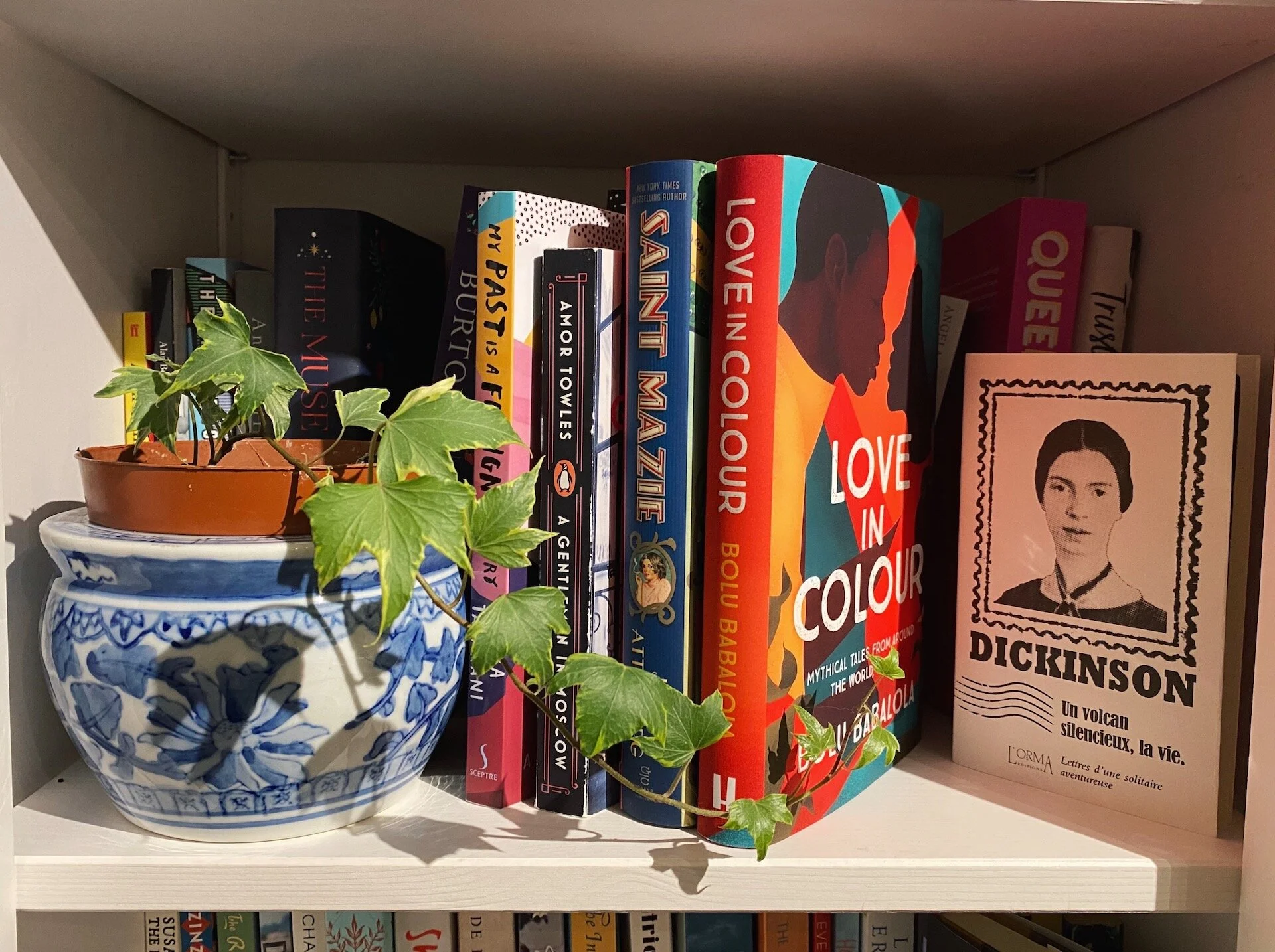Icons I Should Have Had: Kael/Lebowitz
My parents did not subscribe to The New Yorker or to The Atlantic. I visited relatives in New York City a few times during childhood, and in those memories the city became an excited abstraction supplanted by movie scenes and Seinfeld episodes. It’s far larger than Boston, which I’d visit at every opportunity only to later make the long drive back home, just beyond the last outpost of what’s known as ‘the Greater Boston area.’ One NYU college visit was enough to show me how inexperienced and unprepared I was, despite adolescent jaunts and delusions of sophistication. Had I not been so afraid then, had I known about Pauline Kael and Fran Lebowitz, my twenties may have turned out quite differently.
Two recent documentaries focusing on Kael and Lebowitz brought these women to my attention. It should have happened sooner, but again my exposure to cultural criticism outside of The Simpsons and Saturday Night Live was limited, and every self-love Instagram account tells me to not blame myself for not knowing about everything. Both women were and are pioneers in the fields where I’ve been planting seeds, if not yet wielding a scythe. The overdue realization of their existence made me question myself, as well as my qualification to keep writing film and culture reviews for The Attic. Again, the ‘good vibes only’ accounts tell me this isn’t my fault, so I’ll believe them. For now.
Pauline Kael, 1970s – Courtesy of The Jewish Film Festival
A person I did know about is Martin Scorsese, a man Kael and Lebowitz have in common. Scorsese’s work has been in my visual vocabulary since childhood, starting with the three sheet poster of Taxi Driver (1978) that still hangs on the ceiling of my father’s garage opposite another of The Shining (1980). Although I didn’t see the former until my late twenties, Goodfellas (1990) remains a cathartic rewatch, and The Aviator (2004) will always be on my list of favorite movies about movies. Although his filmography has grown stale of late, recycling storylines, monologues, and actors, Scorcese’s role as executive producer of Pretend It’s a City (2021) reminded me of his earlier work, in mission if not in budget.
Back in the late 1960s and early 1970s, before Robert de Niro portrayed different types of sleazy toxic masculinity without the perceived Rat Pack veneer, Scorsese was gaining a name for his gritty depictions of real-life New York City. He filmed off-set in the streets of what was then a dirtier and more dangerous city, into which Lebowitz arrived on a bus from New Jersey after being expelled from high school in 1969. Just a year earlier, Kael began writing film reviews for The New Yorker after her praise of the ultra-violent, groundbreaking Bonnie and Clyde (1967) earned her a pink slip from McCall’s magazine for women.
Kael’s review of Scorcese’s Mean Streets (1973) propelled his career, favoring the stylized but not distorted lens on an existing subculture from one of its native speakers. Comparing his work to that of Federico Fellini and Carol Reed, Kael applauded the methods Scorsese used to tell a story “about American life here and now, and it doesn’t look like an American movie, or feel like one.” Mean Streets received accolades elsewhere, for its raw performances and low-budget handheld or tracking shots that are commonplace today but were the cutting edge then. Yet it was Kael’s mastication of every grungy detail and lurid insight published in an elite cultural magazine that brought a new, more intellectually inclined audience to Scorsese’s films, making him the icon that he is today.
Fran Lebowitz and Andy Warhol, 1983 – Courtesy Curtis Knapp
Scorsese doesn’t need a documentary for a new generation to learn his name, but Kael does. I tried to catch What She Said: The Art of Pauline Kael (2018) in one of the independent urban theaters nearby my workplace, but the showtimes were not in keeping with the schedule of anyone under retirement age. I instead read a number of Kael’s essays and reviews, marveling in her acerbic, insightful, and often hilarious writing style. My own tone echoed hers without even knowing that it did. It was only just recently that I watched the documentary when it was listed on Amazon Prime, and was once again upset that I should see the reviews of Roger and Ebert on every movie poster while being ignorant of Kael and her importance to female writers.
Lebowitz is more current despite her writing career largely beginning and ending before many readers of this article were born. Known for her comedic essays and damning quips, she has made her living through television appearances and public speaking tours. Referred to as a ‘humorist’ and ‘wit,’ Lebowitz is unique in many ways, not least of which being able to sustain a career the way she does, and for which there is very little opportunity these days. Sporting what would become The Attic on Eighth’s uniform of collared shirts with crewneck sweaters, later bespoke jackets, tortoiseshell glasses, and camel coats since her days in the The Factory, Lebowitz is another pillar on which the foundations of my cultural criticism was unknowingly built. Would this move me to approach her in public? Absolutely not, and you shouldn’t, either.
Catherine Scorsese in her Queens apartment, 1974 – Courtesy of the Criterion Collection
Before Pretend It’s a City (2021) and Lebowitz’s earlier collaboration with Scorsese, Public Speaking (2010), he had also directed and produced other documentaries that focused on less glamorous aspects of City living. Following Kael’s promotion and the success of Mean Streets, Scorsese earned a grant from The National Endowment For The Humanities to The National Communications Foundation for Italianamerican (1974). Starring his parents, Charles and Catherine, Scorsese created a visual cultural record of his parents’ and their families’ experiences as immigrants in the late nineteenth and early twentieth centuries. Each recount stories of community reinforced by cultural segregation in what was supposed to be their new homeland. By the time of this documentary many aspects of the way of life they describe had already disappeared, but not all. Luckily for us, Mrs. Scorsese’s pasta sauce recipe will live in perpetuity.
Almost half a century later, Pretend It’s a City carries similar echoes of a lost world. Leibowitz’s interviews are partially conducted in The Players, a members-only social club that has already become a shrine to New York’s theatrical glory days. The club was founded during a time in which the general public was excited to attend stage performances, when books and newspapers were the main sources of information, and when people sent and anticipated letters. Founder Edwin Booth also sought to restore his theatrical family’s name in society after his younger brother assassinated President Abraham Lincoln. The societal structure of that era remains in many examples, including the hostility towards women with dissenting opinions, especially those with last names like Kael and Lebowitz. This sad reality is redoubled by longstanding American anti-intellectualism, an issue that’s been addressed many times since Kael’s early career and beforehand.
Fran with Martin Scorsese, 2014 – Courtesy of Vanity Fair
With this in mind, it didn’t come as a great surprise that What She Said had such a limited theatrical run. Pretend It’s a City had a much wider viewership following Scorsese’s other Netflix production, The Irishman (2019), which was considered a flop even before COVID-19 sent subscriber numbers soaring. It was still up for ten Oscars including Best Director, recalling the #OscarsSoWhite controversy and the zero women nominated in that category that year. Netflix has not released up-to-date statistics on views for The Irishman since 2019, and none for Pretend It’s a City at all. Whether or not viewers’ curiosity has increased during lockdown remains to be seen. It’s also worth keeping in mind that longtime friends Scorsese and Lebowitz were paid a flat rate, no matter the distribution cut. These comparisons don’t speak to the quality of either documentary, which is of course very high and you should watch them if you can.
Kael and Lebowitz were and are the last of a generation whose opinions were prized and earned payment for their viewpoints, even though in Kael’s case they weren’t ever living wages. Kael worked tirelessly as a single mother during a time when that was not an accepted norm, and Lebowitz took “a zillion bad jobs” until her career took off. Both are products of their time in that they could reach the heights they did with neither advanced degrees nor unpaid internship hours. Still, as humans, they’re far from perfect. Kael was savage in her indictments against others with varying levels of deservedness, sometimes so damaging that artists would stop working to recover. Watching Pretend It’s a City, Lebowitz’s sounded off some opinions that triggered my “okay, boomer,” response. These offenses are minor in comparison to what men in their position have done and said, while still maintaining thriving careers and even being praised for similar actions.
Yet with all these qualifiers, I still needed my knowledge of Martin Scorsese’s career to pull this review together. When men provide the structure as well as the content for critical analysis, that’s when it’s left to the writer to search out, more often stumble upon, preceding female voices. So few are given wide exposure until later in their lives, or even after their deaths. It’s therefore not so surprising that I can rattle off an analysis of Leonardo DiCaprio’s collaborations with Scorsese but didn’t know the names of Kael or Lebowitz during my entire academic career. Many young female writers and artists populate the market today, however those widely-distributed laurels will soon lose their gilding if deserving writers aren’t valued. It’s a drum that women continue to be criticized for banging, but we’re still not paid enough to stop the noise. Keep up the racket until you are, and make sure you’re credited.
Catherine Scorsese in Goodfellas – Courtesy of IMDb
Zoë G. Burnett is a writer and film enthusiast based in Massachusetts. A lover of all things spooky and sparkly, she is currently working on her first book about witchcraft and classic style. Zoë is the Media Editor of The Attic on Eighth.


















In a personal essay, Elizabeth Slabaugh visits the disappointments and realization of tempered dreams around traveling to Oxford after not being able to spend a semester at the university due to chronic illness.